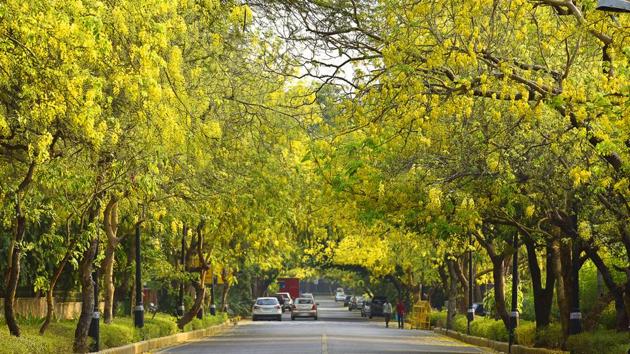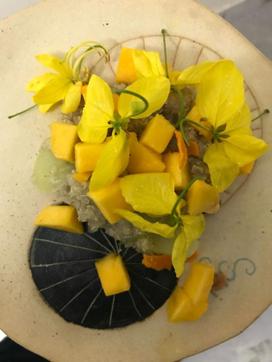Summer respite for Delhiites: The enchanting Amaltas tree
In Ayurveda, Amaltas is known as aragvadha, meaning disease killer.
“Trees are poems that the earth writes upon the sky,” said legendary writer Kahlil Gibran. One such tree which has stood the test of time and has etched its mark on history is the Amaltas tree. With it’s captivating golden flowers on full display during the months of May and June, it’s a stunner. And maybe, this is the reason why Delhiites have always been deeply in love in with the otherworldly Amaltas. But, how has this golden-shower tree, in a way, become a cornerstone of Delhi’s culture? We did a bit of digging.

History and culture
Amaltas, whose botanical name is Cassia fistula, is native to the Indian subcontinent and Southeast Asia. The tree has a mention in the ancient epic Ramayana as well. It was found growing near the hermitage of the sage Matanga. It was also mentioned in the epic Mahabharata, as being found in abundance near Kushika country. It’s known as aragvadha — disease killer in ayurveda. However, its influence doesn’t just stop at medicine; it also extends to arts and literature. Famous English biologist and botanical artist Marianne North’s (1830-1890) beautiful paintings of Amaltas tree are still on display at the Royal Botanic Gardens, Kew, England. A Ramachandran, who is one of the most distinguished painters in India, has also created artwork on Amaltas. However, one of most the famous Amaltas paintings is by artist Sunita Kumar. In her artwork, titled Indian Laburnum, you can see Mother Teresa praying and reading a book while sitting near an Amaltas tree.
As for literature, apart from Ramayana and Mahabharata, Amaltas features prominently in poems of Anannya Dasgupta and Nishu Mathur.
The Delhi connect
Have you noticed roads such as Amrita Sher-Gil Marg, Shanti Path and Akbar Road look so yellow during the months of May and June? The reason is: “In early 1920s when British architect Edwin Lutyens planned the architectural layout of Delhi, he made sure that they planted a lot of Amaltas trees in and around Lutyens Delhi,” says Harinder Singh, designer.
A drive around these trees is relaxing, feels radio jockey Stutee Ghosh. She says, “There is something about the burst of the resplendent colour that brightens up not just our day but spirits as well. It’s difficult to look away from this golden shower of the Amaltas. Here is nature at its breathtaking #nofilter best. If you drive around the city, especially around Lutyens’ Delhi and Chanakyapuri, the play of luscious green and the flamboyant yellow is magical. It’s a treat for the soul.”
Health benefits and culinary usage

The long cylindrical pods of this tree offer various health benefits. “It’s a detoxifier and helps remove harmful toxins and prevent digestive issues like flatulence, colic pain, belching, loss of appetite, heartburn and acidity, and cleanses blood to help keep the skin looking good. It is also known to alleviate symptoms and pain of arthritis and gout”, says Kavita Devgan, nutritionist; adding, “It’s also loaded with nutrients. It’s low in sodium; it is rich in Vitamin K, calcium and is a good source of iron and manganese”.

You don’t get the feeling of summers in Delhi until you have seen sight of the beautiful Amaltas. I have them in my garden also: Karan Oberoi, actor and model
Chef Nishant Choubey explains how Amaltas can be used for culinary purposes. “When it comes to cooking of the flower, it can be brewed to make an excellent tea. They can also be churned into a chutney, jam or preserve. The flower can be cooked with sugar or salt to attain the desired need,” says Chef Nishant Choubey. He further adds, “One can use Amaltas for making salads. When mixed with chili, kaffir lime and peanuts, it works really well as a condiment.” And this is not all, you can use the flower with a staple such as sarson ka saag and Amaltas ki roti.
Looking at the golden tree makes you forget how hot it is in summers: Harinder Singh, designer
However, keep in mind a few things. “Avoid the seed of the flower as it’s toxic. The flower should always be washed with cold water and not hot water. If you use hot water then it might wilt. Also, avoid boiling,” adds Nishant.






